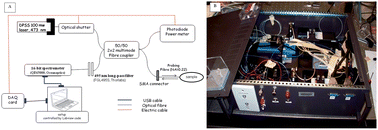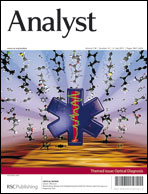Rapid, accurate and sensitive enumeration of bacterial populations in the natural environment is an essential task for many research fields. Widely used standard methods for counting bacteria such as heterotrophic plate count require 1 to 8 days of incubation time for limited accuracy, while more accurate and rapid techniques are often expensive and may require bulky equipment. In the present study, we have developed a computerized optical prototype for bacterial detection. The goal of this research was to estimate the potential of this optical system for Total Viable Bacterial Count in water. For this purpose, we tested water batches with different microbiological content. Bacterial detection was based on fluorescence enhanced by nucleic acid staining. High sensitivity was achieved by a stable diode pumped solid state laser, sensitive CCD spectrometer and in situ excitation and signal collection. The results have shown that the bacterial count from different water origins using our optical setup along with multivariate analysis presents a higher accuracy and a shorter detection time compared to standard methods. For example, in a case where the fluorescence signal is calibrated to the water batch regression line, the relative standard deviation of the optical system enumeration varies between 21 and 36%, while that of the heterotropic plate count counterpart varies between 41 and 59%. In summary, we conclude that the all-fibre optical system may offer the following advantages over conventional methods: near real time examinations, portability, sensitivity, accuracy and ability to detect 102 to 108 CFU per ml bacterial concentrations.

You have access to this article
 Please wait while we load your content...
Something went wrong. Try again?
Please wait while we load your content...
Something went wrong. Try again?


 Please wait while we load your content...
Please wait while we load your content...